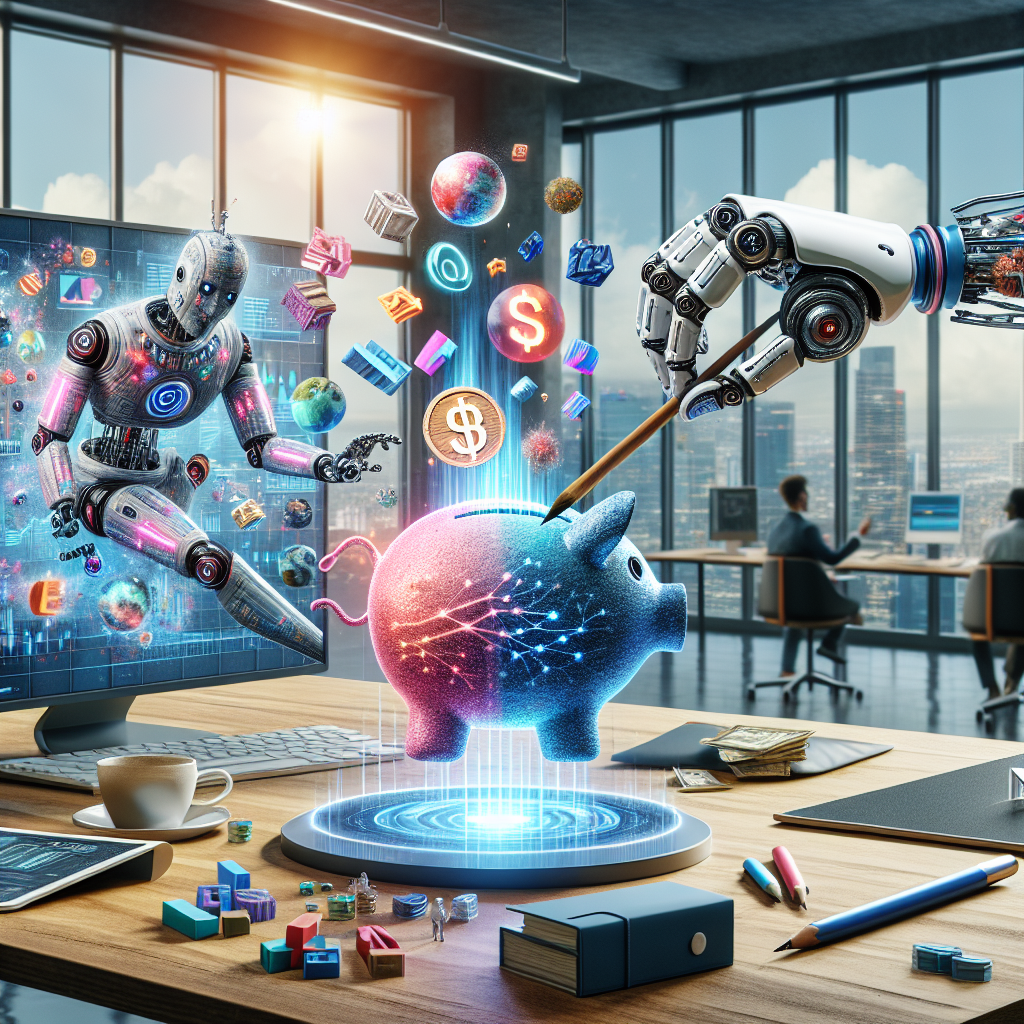-
Financial Data Analysis Tools – MindBridge Joins Snowflake’s AI Data Cloud Platform (TrendHunter.com)

In an era where data reigns supreme, organizations are constantly seeking innovative ways to streamline operations and bolster financial accuracy. A significant breakthrough in this field comes from the collaboration between MindBridge and Snowflake’s AI Data Cloud platform, creating a pioneering approach to financial data analysis. This integration not only harnesses the power of artificial intelligence but also leverages cloud-based data management to facilitate seamless and secure analytics for financial teams.
The MindBridge and Snowflake partnership aims to revolutionize how financial transactions are analyzed. By allowing finance teams to scrutinize transactional data directly within the Snowflake environment, they eliminate the need for complex data transfers. This not only preserves data security protocols but also ensures that the integrity of sensitive financial information is maintained throughout the analysis process.
The AI-powered system constantly monitors financial data to detect anomalies and potential errors, presenting an unmatched opportunity for optimization. By harnessing AI, organizations can proactively identify risks and improve their financial oversight capabilities. This continuous monitoring aligns with emerging trends in financial technology, where the integration of AI into data platforms is transforming how companies engage with their financial data.
One of the standout features of the collaboration is the capacity for automated analysis triggers. As new data is introduced into the system, these triggers update risk assessments in real-time, allowing businesses to respond promptly to changing dynamics. Additionally, the API connectivity ensures that insights and results are fed back into business intelligence workflows, enhancing overall operational efficiency.
Another critical aspect of the MindBridge and Snowflake integration is its flexibility. The deployment options accommodate various compliance requirements, allowing organizations to adhere to regulatory standards without compromising analytic capabilities. This flexibility is crucial in today’s fast-paced business environment, where compliance and operational effectiveness often present conflicting demands.
As finance teams around the world continue to embrace automation, the integration of AI-driven analysis tools signifies a move towards a more proactive approach to risk management. Gone are the days of relying solely on retrospective reviews; organizations are leveraging real-time assessments to significantly enhance their financial decision-making processes.
The implications of this integration extend beyond mere technical enhancements. As financial technology (fintech) evolves, the combination of AI and cloud solutions fundamentally reshapes data analytics within the industry. Organizations are increasingly recognizing the competitive advantage that advanced data management capabilities confer, leading to a wave of innovation across numerous sectors.
Moreover, the emphasis on data security and compliance within this integration showcases the growing importance of governance in financial data analytics. Companies now expect their platforms not only to be efficient and effective but also secure and compliant with the relevant regulations. This convergence of technology and regulatory adherence represents a new paradigm in which businesses can operate securely without hindering their analytical prowess.
The landscape of business intelligence tools is evolving in tandem with these developments. As organizations integrate new AI capabilities into their workflows, a robust and adaptable approach to risk assessment becomes foundational to strategy. Businesses can now incorporate insights directly through API connections, facilitating a more streamlined and responsive approach to financial analytics.
In conclusion, the partnership between MindBridge and Snowflake marks a significant step forward in financial data analysis. By merging AI-driven insights with secure cloud-based management, this integration not only enhances operational efficiency but also propels risk management into the future. For business leaders, product builders, and investors, the implications of this collaboration are clear: adaptive, secure, and innovative financial analytics are essential to navigating the complexities of today’s dynamic business landscape.
-
Microsoft says Edge loads 40% faster after UI revamp, but AI features may be a drag

In a competitive landscape where web browsers must constantly evolve, Microsoft has announced significant performance enhancements to its Edge browser, largely attributed to a major UI overhaul implemented in 2024. The tech giant is positioning Edge as one of the fastest browsers on the market, emphasizing the importance of speed and efficiency in user experience.
With claims of up to a 40% reduction in content loading times since February 2025, Microsoft highlights its commitment to performance. This acceleration is supported by recent optimizations that have lowered the First Contentful Paint (FCP)—a critical metric that measures how quickly visual elements of the browser interface load—below 300 milliseconds. This benchmark is key for user engagement, as research indicates that delays beyond this threshold can negatively impact user satisfaction.
The changes made during the revamp involve incorporating new features that enhance both functionality and user experience. Among the 13 specific elements affected by these improvements are the browser’s Settings page and the AI-powered Read Aloud feature, which enable greater accessibility. The introduction of Split Screen functionality allows users to multitask more efficiently, enhancing productivity across diverse applications.
Microsoft’s evolution of Edge is underscored by the ongoing WebUI 2.0 initiative, a modular design framework for the Edge codebase. This initiative is transformative, as it aims to reduce the JavaScript required during UI initialization, differentiating from the previous monolithic structure. By isolating and optimizing UI elements, Microsoft has created a more agile browser that adapts quickly to user interactions.
However, this technological progress is not without its caveats. Despite the performance gains, some users have expressed concerns that the integration of new AI tools could hinder the user interface experience. While these AI-driven features promise to enrich productivity and provide greater support for users, there is apprehension that they may also introduce unwanted complexity or slowdowns in specific contexts, creating a dichotomy between speed and added functionality.
Looking forward, Microsoft has indicated that it will continue to refine Edge, with more performance upgrades expected in the near future. This commitment illustrates the company’s intention to not only keep pace but also lead in the browser market, amid fierce competition from other players like Google Chrome and Mozilla Firefox.
The enhanced performance metrics for Edge are likely to attract business leaders, product builders, and investors keen on optimizing their workflow using cutting-edge tools. Fast and responsive browsers can significantly impact productivity, especially within business environments where time is critical. With features designed to streamline tasks and improve the overall experience, this upgrade presents potential commercial value that could resonate across industries.
In summary, Microsoft Edge’s revamp signifies a major leap forward in browser performance and user experience. The improvements in speed and responsiveness may well position Edge as a compelling option for users looking for efficiency and innovation. As Microsoft navigates feedback and balances the integration of AI functionalities, the future of Edge looks promising. Business leaders would be prudent to evaluate how such advancements could align with their operational goals, as the digital landscape continues to evolve.
-
AI Content Creation Leads to Costly Fixes for Companies
 As businesses increasingly turn to artificial intelligence (AI) to streamline operations and reduce costs, a recent incident highlights the unexpected repercussions of automation in the content industry. A content agency, aiming to cut expenses, relied on AI-generated copy for a project, only to find themselves on the hook for an expensive rework by a human expert. Sarah Skidd, a product marketing manager from Arizona, found herself tasked with rectifying a batch of AI-generated content that was deemed unsatisfactory, resulting in an additional cost of nearly Rs 1.71 lakh (approximately $2,000) for the agency. This incident underscores a vital lesson for companies looking to leverage AI for content creation: the technology, while powerful, may still necessitate human intervention to achieve quality and engagement.
Skidd’s experience as a freelancer underscores a growing niche in the job market: professionals needed to refine or completely overhaul AI-generated material. When she was hired at a rate of $100 per hour, the expectation was clear: to breathe life into copy that AI had produced in a rather lackluster manner. Hours of effort transformed the content from a bland presentation into a compelling narrative that did justice to the client’s brand. Reflecting on her task, she described the initial output as basic and uninspiring, stating that it lacked the engaging elements that are crucial in marketing, especially in the hospitality sector, which thrives on storytelling and perception. Rather than making minor adjustments, the work required a complete reworking to ensure it resonated with potential clients and stakeholders.
This case raises essential questions about the effectiveness of relying purely on AI for critical tasks, particularly in content marketing where persuasive language and emotional connection are paramount. While automation has a valuable place in increasing efficiency and handling routine tasks, the potential quality drawbacks of AI in creative fields pose a significant risk. The reliance on technology should always be balanced with human insight, creativity, and understanding of nuanced communication. The experiences shared by Skidd are not isolated; as AI technology advances, content creators and marketing professionals are beginning to frequently encounter the limitations of machine-generated writing—limitations that can result in substantial financial implications for companies.
The implications of this scenario extend beyond just the immediate financial setback for the content agency. There is a broader lesson to be learned regarding the integration of AI in business processes. Companies must realize that while AI can indeed reduce certain operational costs, it may inadvertently lead to new expenses if the output quality is not up to par. In this instance, what seemed like a straightforward cost-cutting measure resulted in unexpected higher costs due to the necessity of hiring an expert to rectify errors and shortcomings inherent in AI-generated content.
For business leaders, this serves as a crucial reminder to evaluate the long-term impact of integrating AI into their operations. Rather than solely focusing on short-term savings, it is essential to recognize the potential indirect costs associated with maintaining quality and standards in product offerings. Strategic investments must also prioritize a balance between technology and human expertise. The expertise to craft nuanced copy that resonates with target audiences cannot easily be replaced with algorithmic generation alone. As companies navigate the rapidly evolving landscape of AI, building a hybrid model that leverages both AI power and human creativity may be the optimal path forward.
As the conversation around AI continues to evolve, Skidd’s experience positions her not just as a product manager but as a voice in a growing trend where human intervention is essential to complement and enhance what AI can offer. For those looking to implement AI solutions, the key takeaway is that while these technologies can enhance productivity, they should serve to augment human capabilities rather than replace them altogether. The automation of creative processes, without adequate human oversight, can lead to outcomes that necessitate costly corrections, ultimately defeating the purpose of cost-saving initiatives.
As businesses increasingly turn to artificial intelligence (AI) to streamline operations and reduce costs, a recent incident highlights the unexpected repercussions of automation in the content industry. A content agency, aiming to cut expenses, relied on AI-generated copy for a project, only to find themselves on the hook for an expensive rework by a human expert. Sarah Skidd, a product marketing manager from Arizona, found herself tasked with rectifying a batch of AI-generated content that was deemed unsatisfactory, resulting in an additional cost of nearly Rs 1.71 lakh (approximately $2,000) for the agency. This incident underscores a vital lesson for companies looking to leverage AI for content creation: the technology, while powerful, may still necessitate human intervention to achieve quality and engagement.
Skidd’s experience as a freelancer underscores a growing niche in the job market: professionals needed to refine or completely overhaul AI-generated material. When she was hired at a rate of $100 per hour, the expectation was clear: to breathe life into copy that AI had produced in a rather lackluster manner. Hours of effort transformed the content from a bland presentation into a compelling narrative that did justice to the client’s brand. Reflecting on her task, she described the initial output as basic and uninspiring, stating that it lacked the engaging elements that are crucial in marketing, especially in the hospitality sector, which thrives on storytelling and perception. Rather than making minor adjustments, the work required a complete reworking to ensure it resonated with potential clients and stakeholders.
This case raises essential questions about the effectiveness of relying purely on AI for critical tasks, particularly in content marketing where persuasive language and emotional connection are paramount. While automation has a valuable place in increasing efficiency and handling routine tasks, the potential quality drawbacks of AI in creative fields pose a significant risk. The reliance on technology should always be balanced with human insight, creativity, and understanding of nuanced communication. The experiences shared by Skidd are not isolated; as AI technology advances, content creators and marketing professionals are beginning to frequently encounter the limitations of machine-generated writing—limitations that can result in substantial financial implications for companies.
The implications of this scenario extend beyond just the immediate financial setback for the content agency. There is a broader lesson to be learned regarding the integration of AI in business processes. Companies must realize that while AI can indeed reduce certain operational costs, it may inadvertently lead to new expenses if the output quality is not up to par. In this instance, what seemed like a straightforward cost-cutting measure resulted in unexpected higher costs due to the necessity of hiring an expert to rectify errors and shortcomings inherent in AI-generated content.
For business leaders, this serves as a crucial reminder to evaluate the long-term impact of integrating AI into their operations. Rather than solely focusing on short-term savings, it is essential to recognize the potential indirect costs associated with maintaining quality and standards in product offerings. Strategic investments must also prioritize a balance between technology and human expertise. The expertise to craft nuanced copy that resonates with target audiences cannot easily be replaced with algorithmic generation alone. As companies navigate the rapidly evolving landscape of AI, building a hybrid model that leverages both AI power and human creativity may be the optimal path forward.
As the conversation around AI continues to evolve, Skidd’s experience positions her not just as a product manager but as a voice in a growing trend where human intervention is essential to complement and enhance what AI can offer. For those looking to implement AI solutions, the key takeaway is that while these technologies can enhance productivity, they should serve to augment human capabilities rather than replace them altogether. The automation of creative processes, without adequate human oversight, can lead to outcomes that necessitate costly corrections, ultimately defeating the purpose of cost-saving initiatives.
-
Apple and Nvidia Bring AI Manufacturing to Houston
Houston is entering a new era as Apple and Nvidia set plans to open high-tech facilities focused on artificial intelligence. Long known for its oil and gas industries, the city is now attracting attention as a potential hub for advanced manufacturing.

Nvidia is preparing to launch a cutting-edge supercomputer production site within the next year, while Apple is designing a 250,000-square-foot AI server facility slated for completion by 2026. These efforts reflect broader trends in reshoring manufacturing and embracing automation, especially in response to global trade tensions.
Houston’s central location, cost-effective energy, and pool of skilled workers make it an attractive choice for this tech shift. If all goes well, the move could bring thousands of jobs and help reshape the city’s economy beyond its traditional roots.
-
xAI Unveils Grok-3: A Cutting-Edge AI Model
In April 2025, xAI, the artificial intelligence company founded by Elon Musk, introduced its latest AI model—Grok-3. This new model is a major leap forward, having been trained using ten times the computational power of its predecessor, Grok-2, and runs on an impressive 200,000 GPUs within the Colossus data center.

Grok-3 has outperformed OpenAI’s GPT-4o in areas like mathematical reasoning and scientific problem-solving.
Key Features of Grok-3:
- Big Brain Module:
Designed for deep reasoning, it excels at handling complex tasks. - DeepSearch:
This feature allows Grok-3 to scan the internet and the X platform, summarizing information on any given topic in detail. - Image Editing Module:
Users can upload photos, specify desired changes, and get modified versions, making it a versatile tool for content creation.
Currently, Grok-3 is accessible exclusively to Premium+ subscribers on the X platform and SuperGrok users. In the future, xAI plans to release API access for businesses.
- Big Brain Module:
-
AI Revolutionizes U.S. Healthcare with Smarter Diagnosis and Treatment
Artificial intelligence is rapidly transforming the U.S. healthcare landscape in 2025. Medical institutions and tech startups across the country are leveraging AI to deliver faster, more accurate diagnoses, and to provide care that’s tailored to each individual patient.

Here’s how AI is making a difference:
- Smarter Diagnostics:
AI algorithms can analyze scans, lab results, and health records to catch illnesses earlier than traditional tools—sometimes even spotting hard-to-detect cancers. - Tailored Treatments:
With access to genetic and medical history data, AI helps doctors design customized treatment plans that are more effective and safer for each patient. - Real-Time Health Monitoring:
Wearables powered by AI are helping monitor patients continuously, alerting doctors to risks before symptoms become serious. - Streamlined Hospital Management:
From scheduling surgeries to assigning staff, AI helps hospitals run more efficiently, saving time and reducing costs.
Health experts say this growing use of AI is leading to better outcomes, less strain on medical staff, and a more patient-centered approach to care.
- Smarter Diagnostics:
